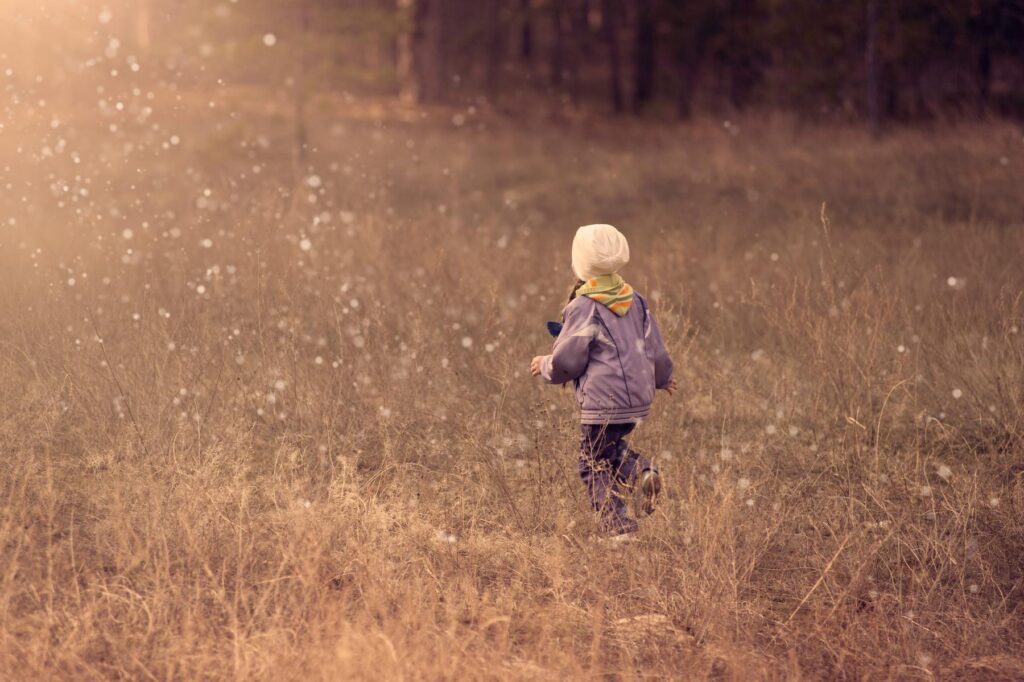Forest school: outdoor learning experiences in UK primary education

Title:
Outdoor learning spaces: The case of forest school
Published in:
Area (2018). Vol. 50(2), pp. 222–231
Author:
Frances Harris, Department of Biological and Environmental Sciences, University of Hertfordshire
What did the research explore?
The research builds on a growing body of literature that looks at the effectiveness of forest school in the United Kingdom and how it can provide children with memorable, stimulating and exciting learning experiences (Harris, 2018).
Introduced from Scandinavia, forest school has become increasingly popular within primary education in the United Kingdom. Forest school usually takes place in a woodland setting or a dedicated area of a school grounds. The sessions are led by qualified instructors and teach children skills such as ‘fire-lighting, basic wood carving and tool use, and local environmental knowledge’ (Harris, 2018, p. 225). There is also a focus on building children’s self-esteem, confidence and team-work skills.
The research explored how the outdoor learning space for a forest school influences the experience of pupils and forest school leaders. The research attempted to answer questions such as:
- What is the experience of being outdoors on the forest school experience?
- How does this outdoor learning differ from that of a classroom environment?
- What aspects of the forest school learning space support pupils’ experiences?
- How does the outdoor learning space affect teaching and learning at forest school?
How did they conduct the research?
This study was qualitative, and focused on building a theory around forest schools, rather than testing a hypothesis about them. It was undertaken in two phases: observing children attending forest school; and then using semi-structured interviews with forest school practitioners.
Phase one was carried out to familiarise the researcher with forest school sessions. Harris (2018) observed 72 primary-school children who attended five to six weekly forest school sessions in groups of 12 over the course of a half term. From these observations, she identified research themes to explore in more detail in the second phase of the study.
Phase two of the research moved to exploring the experience and knowledge of forest school practitioners. The research team conducted 20 semi-structured interviews with forest school leaders, all of whom had been practising for at least three years. The interviews explored the practitioners’ views on what aspects of being outdoors contributed to forest school using the following questions:
- What aspects of the learning space support pupil’s experiences of learning at forest school?
- How does the new learning space differ from the classroom environment?
- How does the learning space affect teaching and the dynamics of learning?
According to Harris (2018, p. 226), these three core questions were supported and developed through further discussions. The interviews were recorded, transcribed, read through and coded against the themes identified in phase one. Furthermore, ‘comments relating to each theme were then gathered, read repeatedly and reviewed to identify sub-themes and clarify emerging issues’ (Harris, 2018, p. 226).
What were the key findings?
According to Harris (2018, p. 226), you can split the key findings into three sections:
- Space in a physical sense and ‘in more metaphorical ways’
- Space ‘where behaviours are permitted’
- Space ‘outside of the national curriculum’.
Physical space
Harris (2018) suggests that the learning space at a forest school is not only more expansive than an average classroom, but also always changes with the seasons. This provides stimulating, memorable and exciting learning experiences throughout the year. It was also suggested that being outside gave children chance to ‘breathe’ and express themselves more openly and freely than they might do in a classroom.
Behaviour space
From her interviews, Harris (2018) found practitioners felt that there were fewer constraints in forest school and children were ‘able to run and let off energy, to shout and be noisy and express a full range of emotions’ (Harris, 2018, p. 228). This also gave the children more independence and agency to choose what they wanted to do, giving them greater ownership of their learning.
Space from the national curriculum
The fact that forest school was not controlled by the national curriculum and its associated targets was considered a significant benefit by practitioners. This, it is argued, provided greater flexibility and pedagogical freedom to explore children’s interests away from formal classroom teaching.
What are the limitations?
One of the main limitations of the research is the potential bias of forest school practitioners who are likely to be positive about outdoor learning (Harris, p. 226). This is somewhat countered, however, by the need ‘to conduct research with practitioners with a depth of experience, training and understanding of forest school’ (Harris, p. 226).
It is also not clear how old the children were beyond ‘primary school age’ which makes it difficult to establish which year groups might benefit most from attending forest school.
The lack of pupil voice may also be considered to be a limitation of this study as it would have been interesting to discover the pupils’ perceptions and thoughts on forest school.
The main idea that I would take from this research is the benefits or outdoor learning on pupils’ academic, social and behavioural development.
What ideas might you adopt for your own classroom from the research?
I would try to ensure that pupils are given enough opportunities to learn outdoors across the duration of the academic year. It would, however, need careful planning and implementation across the curriculum to ensure that it had a positive impact on pupils’ learning.
What questions does the research raise for teachers?
- How can schools provide outdoor learning opportunities for all pupils?
- What impact does the increase in outdoor learning opportunities have on pupils’ behaviour?
- Should schools give more time and space for pupils to become more independent in their learning?
- Can outdoor learning opportunities be threaded throughout the curriculum rather than being used as an additional short-term intervention?
- Should all schools have specially trained outdoor learning practitioners?
- What are the financial and logistical implications of increasing the provision for outdoor learning?
Further reading
Blenkinsopp, S., Telford, J., & Morse, M. (2016). A surprising discovery: Five pedagogical skills outdoor and experiential educators might offer more mainstream educators in this time of change. Journal of Adventure Education and Outdoor Learning, 16, 346–358.
Fiennes, C., Oliver, E., Dickson, K., Escobar, D., Romans, A., & Oliver, S. (2015). The existing evidence-base about the effectiveness of outdoor learning. Institute of Outdoor Learning, Blagrave Trust, UCL and Giving Evidence Report.
Harris, F. (2017). The nature of learning at forest school: Practitioners’ perspectives. Education 3-13, 45, 272–291.
This article was published in August 2018 and reflects the terminology and understanding of research and evidence in use at the time. Some terms and conclusions may no longer align with current standards. We encourage readers to approach the content with an understanding of this context.










